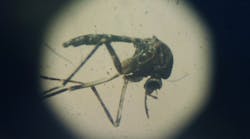Latest from Technology
AMA Warning on LED Street Lighting Provokes Comments from Lighting Industry
After doctors of the American Medical Association (AMA) last month released a statement airing their concerns about the health and environmental effects of high-intensity LED street lighting and recommending specific parameters for the lighting systems, the lighting industry reacted with a flurry of statements calling various aspects of the AMA guidance into question.
The U.S. Department of Energy (DOE) issued a statement titled “Get the Facts: LED Street Lighting” in response to the AMA guidance, questioning the AMA’s emphasis on LED technology.
“While the AMA’s guidance is intended to reduce the harmful human and environmental effects of street lighting in general, it focuses on LEDs in particular. But it’s important to note that these issues are neither new nor restricted to LED technology. … [A]t the same power and wavelength, electromagnetic energy is the same, regardless of source type.”
In fact, DOE said, LEDs offer a number of distinct advantages over other lighting technologies for addressing the concerns raised by the AMA, including the ability to tailor the spectral content of light to minimize the blue light emitted. AMA recommended lighting with a correlated color temperature (CCT) of 3,000K or lower to minimize blue light.
“In point of fact, if one compares the blue content of an LED source with that of any other source, with both sources at the same CCT, the LED source emits about the same amount of blue. This applies to halogen, fluorescent, high-pressure sodium, metal-halide, induction, and other source types,” the DOE statement said, going on to point out some of the potential problems of color distortion with previous technologies. “Low CCTs may be beneficial for reducing nonvisual impacts, but they may also reduce the effectiveness of the lighting.”
The National Electrical Manufacturers Association (NEMA), Rosslyn, Va., released a statement noting its agreement with the AMA about the importance of health and environmental considerations in lighting, but raised questions about some of the AMA’s specific recommendations.
“The American Medical Association’s community guidance on LED outdoor lighting is aligned with lighting manufacturers’ long-standing recommendations on how to design safe and efficient light for night,” NEMA said in its statement. Those recommendations include using lighting control options such as motion or dusk-to-dawn sensors; shielding the light source to curtail excessive uplight, sidelight, and glare; designing for the minimum light levels and energy necessary for the task.
NEMA and its lighting manufacturer members took issue, however, with the AMA recommendations on LEDs regarding the spectral content of outdoor lighting installations.
“NEMA agrees that spectral content should be one factor in effective lighting for outdoor installations. However, a single solution is simply not appropriate for all situations. NEMA also questions the wisdom of assigning significant weight to this recommendation since outdoor lighting design requires a complex analysis of many criteria. Outdoor lighting systems will vary depending on the application and local conditions. Tradeoffs in the considerations of visibility, environmental impacts, energy efficiency, cost, personal safety and security need to be optimized, which cannot be achieved with a single solution.”
NEMA said the AMA recommendations may compromise the ability of the lighting system to meet all critical design criteria for each unique application, and is not supported by the current body of research.
The Lighting Research Center (LRC) at Rensselaer Polytechnic Institute, Troy, N.Y., weighed in with a heavily footnoted summary of the science of human perception and lighting from Mark Rea, director of the LRC, and Mariana Figueiro, Light & Health Program director.
The LRC response covered diverse topics in health and lighting including human response to two types of glare, melatonin suppression from short-wavelength light, circadian disruption and biological response characteristics related to blue light.
In their summary, Rea and Figueiro call for a more comprehensive discussion of human health and lighting. “Professional responsibility must include rational and balanced discourse, whereby scientific and technical understanding lends insight into the social benefits as well as the social costs of [LED] technology. The foundations for this discourse must rely upon a complete characterization of the physical stimulus as it affects a specific biological response. Misapplication of metrics, such as CCT, combining just one aspect of the physical stimulus with just one type of biological response, must be strenuously avoided.”












